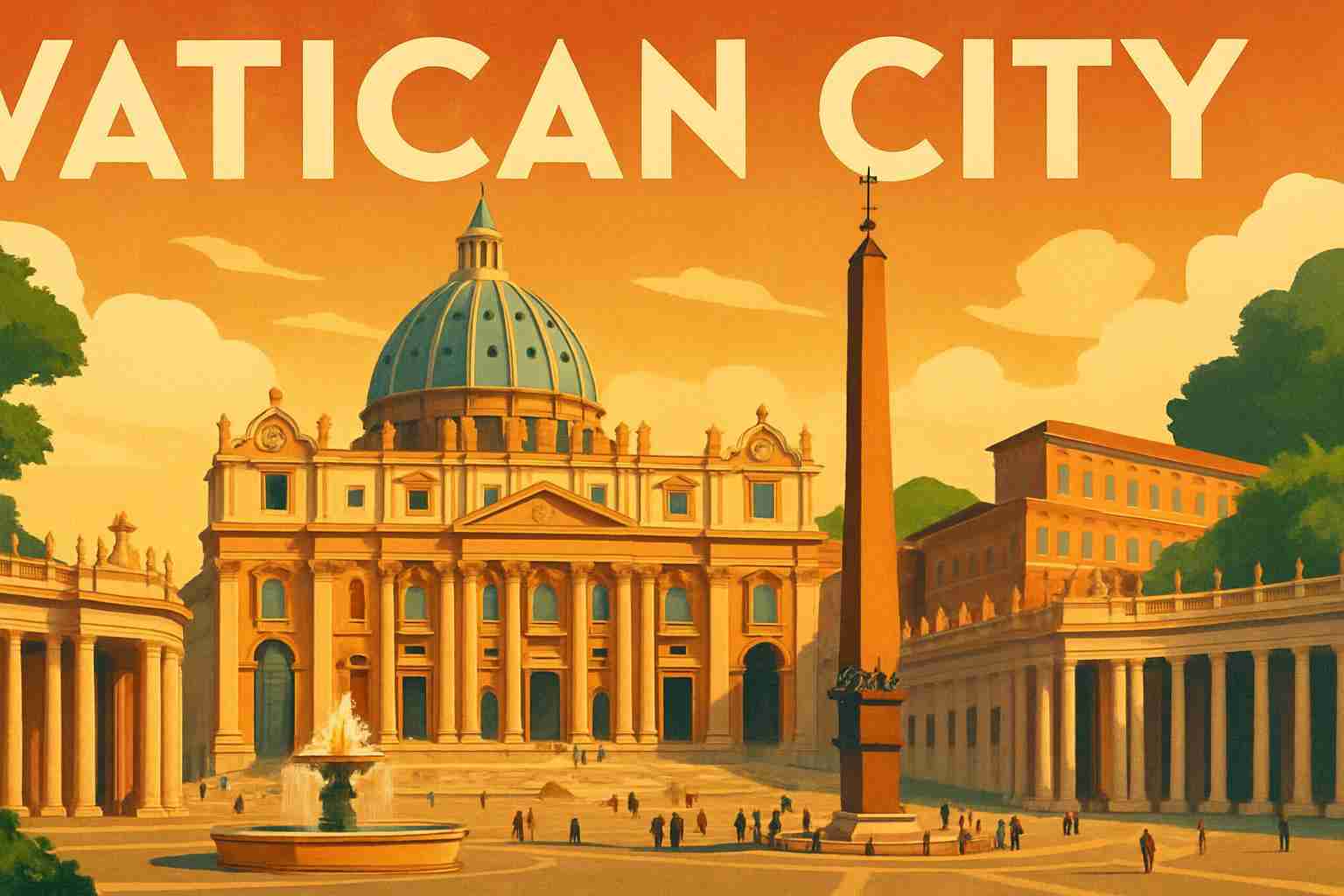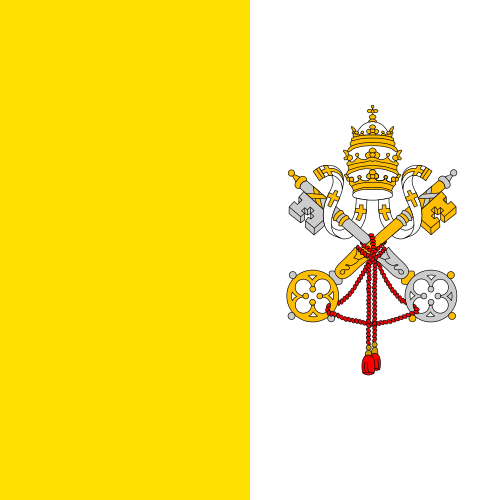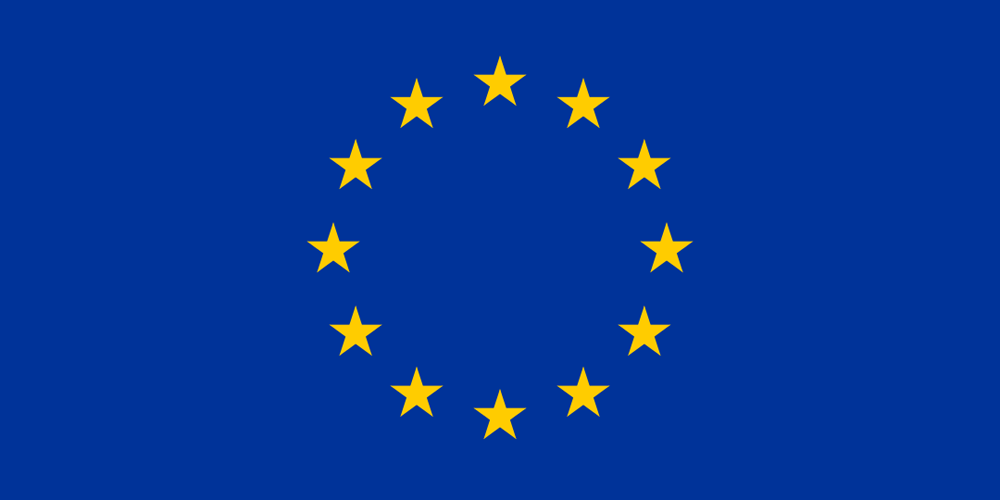Currency in Vatican City: EUR Send & Spend FX Guide
 Resources for Expats, Travelers and Entrepreneurs Navigating Life and Trade in Vatican City with the Euro.
Resources for Expats, Travelers and Entrepreneurs Navigating Life and Trade in Vatican City with the Euro.

What's in this Vatican City currency guide?
What currency is used in Vatican City?
The official currency of Vatican City (country code: VA) is the Euro, with symbol € and currency code EUR.
What is a good Euro exchange rate?
The BestExchangeRates.com currency comparison table below helps you see the total cost of your currency transaction by showing the exchange rates offered by different providers. It also makes it easy to spot potential savings from market-leading FX services compared to bank rates.
To see a full list of rates, enter your transaction type, currencies and amount then click ‘GET RATES’:
Loading rates...
|
|
|
Good things to know about the Euro
As of June 16, 2025, the Euro (EUR) has experienced notable developments affecting travelers, expats, and business owners:
- Interest Rate Adjustments: The European Central Bank (ECB) has reduced its key interest rates multiple times since April 2025, with the deposit rate now at 2%. This easing cycle aims to stimulate economic growth amid global uncertainties. (ft.com)
- Inflation Trends: Eurozone inflation has moderated, with the latest data showing a decrease to 2.4% in November 2024, bringing it closer to the ECB's 2% target. (nbcdfw.com)
- Eurozone Expansion: Bulgaria is on track to adopt the euro on January 1, 2026, following successful convergence assessments. This expansion may influence currency dynamics and economic interactions within the euro area. (en.wikipedia.org)
These developments are crucial for individuals and businesses engaged in international transactions, as they can impact exchange rates, purchasing power, and overall economic conditions.
For more EUR information check out our selection of Euro news and guides.
Frequently Asked Questions
What currency should I use in Vatican City?
The domestic currency in Vatican City is the Euro.
What is the Euro currency code and symbol?
The three letter currency code for the Euro is EUR — symbol is €.
What does the Euro look like?
Here is an example Euro banknote:

Which countries use the Euro?
It is the domestic currency in Eurozone, Aaland Islands, Andorra, Austria, Belgium, Croatia, Cyprus, Estonia, Finland, France, French Guinea, French Southern Territories, Germany, Greece, Guadeloupe, Vatican City, Ireland, Italy, Latvia, Lithuania, Luxembourg, Malta, Martinique, Mayotte, Monaco, Montenegro, Netherlands, Portugal, Reunion, Saint Barthelemy, Saint Martin, Saint Pierre and Miquelon, San Marino, Slovakia, Slovenia and Spain.
Is the Euro a closed currency?
No, the Euro is freely available and convertible. See guide: What is a closed currency?
What are equivalent amounts of USD and EUR?
Here are some popular conversion amounts for USD to EUR (US dollar to Euro)*.
*Converted at the current USDEUR interbank exchange rate. Calculate actual payout amounts for Send Money and Travel Money exchange rates.

Travel money for Vatican City
Using Wise for Euro travel money is a smart choice for savvy travelers. With its competitive exchange rates and low fees, Wise allows you to convert and manage multiple currencies effortlessly.
Be careful when using your own bank's Debit/Credit Card, as your bank may also charge an extra 3% as an “Overseas Transaction Charge” plus “Overseas ATM” fees for withdrawing cash on top of the standard Visa/Mastercard 2.5% from market mid-rate.
For card purchases, if you are offered a choice of currencies always select to Pay in Euro otherwise you will typically get much worst dynamic currency conversion (DCC) exchange rates.
If you really want Euro cash before departure, you can save money by ordering online. You generally get better rates and can pick up the EUR cash locally or even on travel day at the airport.
Vatican City: Travel Guide
Traveling to Vatican City requires careful financial planning to ensure a smooth and cost-effective experience. Here's a comprehensive guide to help you navigate currency considerations and manage your money effectively during your visit.

It might only cover about half a square kilometre, but the Vatican looks every inch a religious superpower. Its holy buildings are monumental in scale and its lavishly-decorated halls house some of the world’s most celebrated artworks.
The actual Vatican is very small, a few buildings, but its meaning is global. Whatever it means to you, it is worth seeing. You don't need a tour, you can walk in and see it all, stunning architecture, and the awe of centuries of faith. Just, if you aren't up for a very hard climb and you want to see the view of Rome from the top, it can be a claustrophobic climb. Take the lift when you if you plan to see Rome from the top the Vatican. The climb to the lovely view at the top can be hard, and not very pleasant. The lift, however, can take you you up to one of the most amazing views of the city. Expect it to be crowded. Always expect a very long queue (30 mins minimum) as the queues are long every day. Rome is an expensive place to stay, but if you look around the internet you can can find good bargains. It is well worth looking around, you can find amazing places cheaper than most with a bit of effort.
Start early at the Vatican Museums. This colossal museum complex occupies the 5.5-hectare Palazzo Apostolico Vaticano and contains one of the world’s greatest art collections, culminating in the Michelangelo-decorated Sistine Chapel. There are kilometres of galleries to explore, with everything from Egyptian mummies and Etruscan bronzes to classical sculptures, cartographic tapestries and Renaissance canvases. The Stanze di Rafaello (Raphael Rooms) will stop you in your tracks as you pause to marvel at the Renaissance maestro’s amazingly detailed frescoes.
The Vatican Museums’ star attraction, the Sistine Chapel boasts two of the world’s greatest masterpieces: Michelangelo’s ceiling frescoes (1508-1512) and his Giudizio Universale (Last Judgment; 1535–1541). For the best views of the ceiling design, which covers 800 square metres and depicts episodes from the Old Testament, cross to the chapel’s main entrance in the east wall (opposite the visitor entrance).
Entering St Peter’s Basilica for the first time is an unforgettable experience. The size and opulence of the cavernous 187m-long interior are breathtaking to behold, and wherever you look your gaze falls on yet another priceless masterpiece. One of the basilica’s most celebrated works is Michelangelo’s Pietà, a moving sculpture of the Madonna cradling her lost son near the main entrance.

Everyday Costs in in Vatican City
How much does it really cost to live, work, or travel in Vatican City? Here's what to expect for daily expenses and expat living.
Currency Guide for Vatican City (ISO code: VA)
Traveling to Vatican City can be a unique experience, and for a one-week mid-range stay, a traveler should budget approximately €1,000 to €1,500. This estimate includes accommodations, meals, and activities. Here’s a breakdown of typical daily expenses to help you plan your budget:
- 🍝 Meal at a local restaurant: €15-€25
- ☕ Coffee: €2-€4
- 🚍 Public transport fare: €1.50
- 📱 Prepaid SIM card: €10-€25
- 🛏️ Budget hotel or Airbnb: €75-€150 per night
In general, Vatican City is considered an expensive destination, primarily due to its high tourism demand. Comparing costs, a trip to Vatican City is pricier than typical expenses in the United States, where a similar mid-range stay might land you around $1,200, and also more expensive than the UK, where travelers can expect slightly lower daily expenses.
Expat Living in Vatican City
For expats living in Vatican City, typical monthly living costs will range from €1,500 to €3,000, depending on lifestyle choices. Major expenses will include rent, utilities, groceries, and dining out, which can be higher than in neighboring Italy. Those considering banking options should note that while local banks are available, card usage is commonplace in shops and restaurants, often offering more favorable exchange rates. For sending or receiving money, services such as Wise or OFX can provide advantageous rates compared to local currency exchanges, especially for larger transactions. Generally, for day-to-day expenses, using your debit or credit card can help avoid the hassle of exchanging cash locally.
USD/EUR Market Data
The below interactive chart displays the USD/EUR change and UP📈 DOWN📉 trends over the past 1 Year.

Recent Euro Market News
December 4, 2025
1. ECB Maintains G7 Stance on Exchange Rates: Piero Cipollone, a member of the European Central Bank's executive board, affirmed the ECB's commitment to the G7's position on foreign exchange rates, emphasizing market-determined rates and refraining from targeting exchange rates for competitive advantage. (reuters.com)
2. Inflation Surprises in Eurozone: ECB Chief Economist Philip Lane noted recent "upside surprises" in eurozone inflation, challenging prior expectations of a decline in early 2026. Inflation, which had stabilized around the ECB's 2% target, recently ticked up slightly above that level. (reuters.com)
3. Eurozone Inflation Ticks Up: Eurozone inflation rose slightly to 2.2% in November from 2.1% in the previous month, continuing to hover near the ECB’s 2% target. This uptick is attributed to falling energy prices countering strong domestic price pressures, particularly in the services sector. (reuters.com)
4. ECB's Nagel on Inflation Stability: ECB policymaker Joachim Nagel stated that eurozone inflation is nearly at the ECB's 2% target, with November seeing a slight increase to 2.2% from October's 2.1%. He emphasized that inflation is expected to continue fluctuating around this level, suggesting stability in the near term. (reuters.com)
Recent Developments in Eurozone Inflation and ECB Policies:
- ECB's Lane flags 'upside surprises' to euro zone inflation, Published on Wednesday, December 03
- Euro zone inflation ticks up, pointing to steady ECB rates, Published on Tuesday, December 02
- Euro zone inflation practically at target, ECB's Nagel says, Published on Tuesday, December 02
For more EUR information read our News and guides to the Euro.
Send Money to Vatican City - Best Rates
To get a good (and fair) exchange rate when sending money to Vatican City you need to find and compare exchange rates for International Money Transfers (IMTs).
The available FX rates for sending money abroad can be very different to the mid-market (wholesale) rate which you see reported online and in the News.
You should especially compare your own bank's exchange rates to those available from Money Transfer specialists to see how much you can save - we make that calculation easy in the below table.
Get a better deal for foreign transfers to Vatican City
When sending money to Vatican City it’s important to compare your bank’s rates & fees with those we have negotiated with our partner money transfer providers. To get a better deal you should follow these 4 simple steps :
- Open an account with a BER reviewed FX provider (id docs may be required)
- You specify the local or Euro amount you want to transfer
- Make a local currency domestic transfer for the requested amount to the provider's bank account in your country
- Once your funds are received by the provider the converted EUR amount will be transfered to the recipient account you specify in Vatican City.
Use the above calculator to compare the exchange rates of FX specialist providers rates versus your bank's standard rates you can hopefully save around 5% and maybe more - end result is more Euro deposited into the recipient bank account and less margins and fees kept by the banks!
